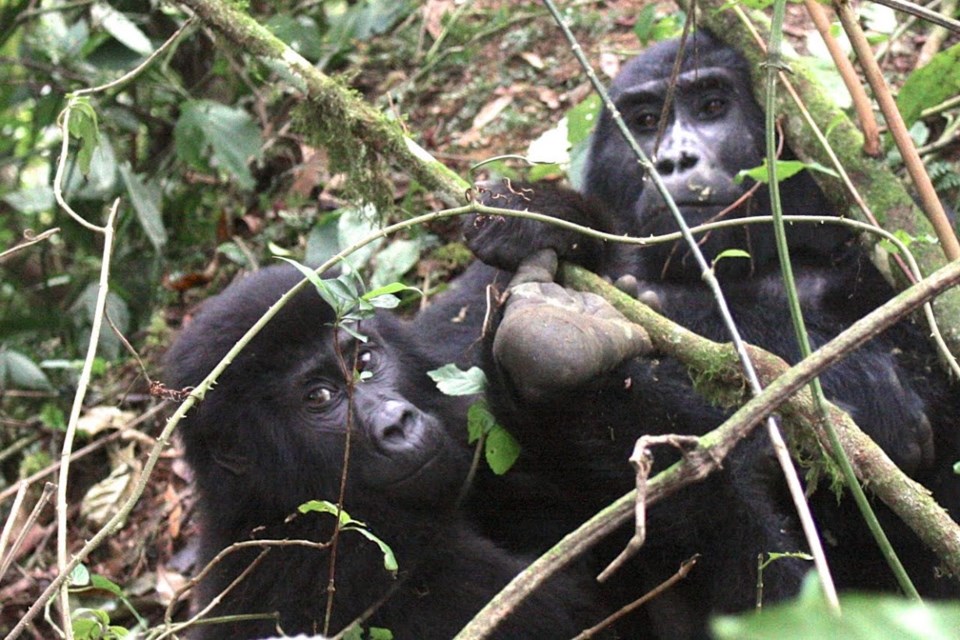It’s 6 a.m. at Kyambura Gorge Lodge, just outside of Uganda’s Queen Elizabeth National Park, and I can hear singing. Not being a morning person, I’ve declined a wake-up call, but I can just make out the melodic voice of Peace, the lodge’s personal butler, as she delivers fresh, local coffee to my neighbour.
We’re up early to head into the north section of the park for a lion safari. We join a researcher who stretches his arm through the roof of a safari vehicle, turning his aerial to find the lions. Some of the park’s female lions wear radio collars for tracking purposes. Monitoring their movements allows rangers to reduce conflict with local communities by alerting them when lions get close to livestock, while learning more about how the lions breed, feed, and move. Tagging along on a research outing lets us go off-road into the park for a close-up view.
After about 15 minutes, we spot two lionesses and two cubs quietly working their way through a fresh kill. We watch, and listen, hearing the powerful jaws gnawing on tendon and bone.
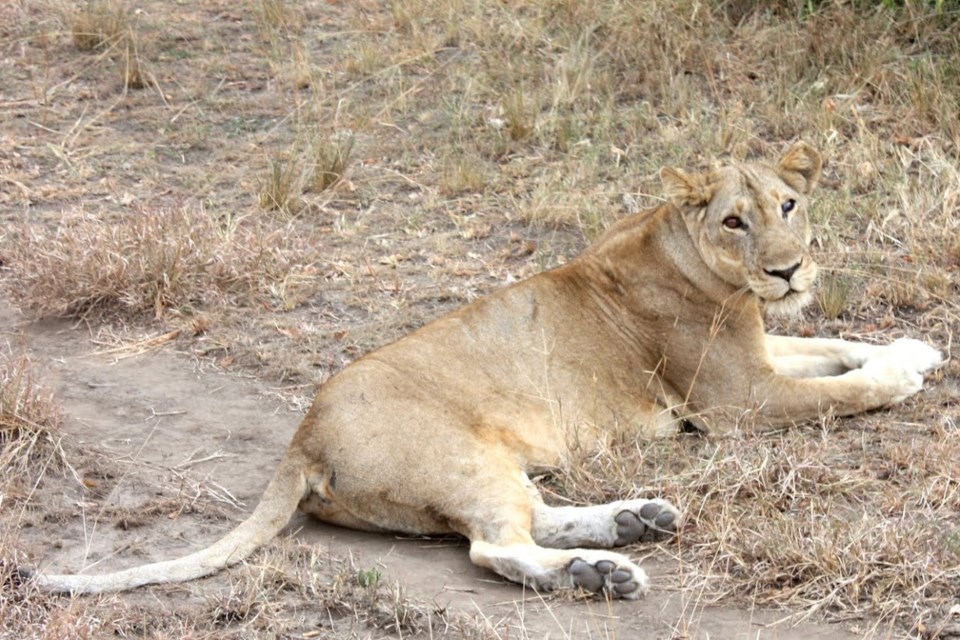
It’s a dramatic moment, to be sure, but Uganda has already shown it can deliver on big game promises. The East African country is home to all of the “Big Five” animals — leopard, lion, buffalo, elephant, and rhinoceros, although the latter is found only at Ziwa Rhino Sanctuary. We’ve seen countless elephants and water buffalo over the last few days, along with plenty of warthogs, antelopes, and baboons. We’ve seen giraffes silhouetted against the sunset sky and sailed quietly past hippos eyeing us suspiciously from the muddy banks of the Nile.
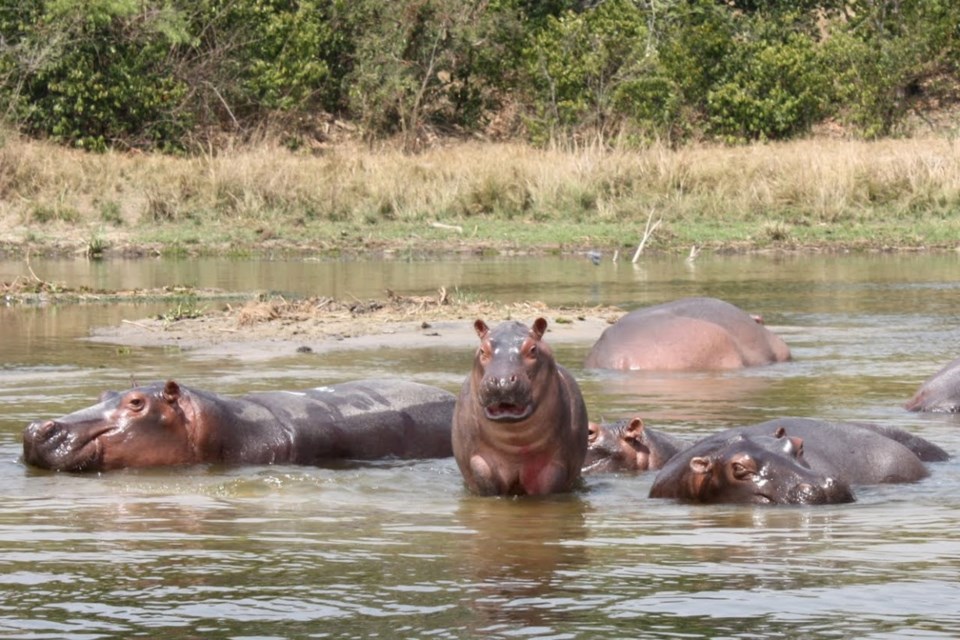
Still, the most exhilarating wildlife experience is yet to come. We head out of the park and back to the lodge to outfit ourselves in full trekking gear — including long pants tucked into our socks to keep out the fire ants — and drive to Kalinzu Forest. We only walk for about five minutes before we hear the incredible racket of a community of chimpanzees, echoing through the trees to sound like it’s coming from all sides. Their cries can carry up to two kilometres, so we’re not sure how close they really are, but our faces light up and we keep our eyes locked on the upper branches.It’s about 10 minutes more before we see them, up in the canopy.
And then we’re entranced, watching as they climb and play. A mother carries her baby through the treetops. A male lounges on a sturdy branch. They seem to be in near constant motion, swinging and shouting and climbing up and down. It’s a thrill to be in their forest, this madhouse, observing chimp life in the wild.
The chimps couldn’t be more different from Uganda’s other big primate draw, the mountain gorillas. We trekked for them too, in Bwindi Impenetrable National Forest where we climbed straight up an impossibly steep hill to find them sitting sedately on the forest floor, munching on leaves. The group’s head silverback walked by without a sound. A mother sat quietly with her child, and a younger male nursed wounds from a fight over a female he didn’t have the status to pursue.
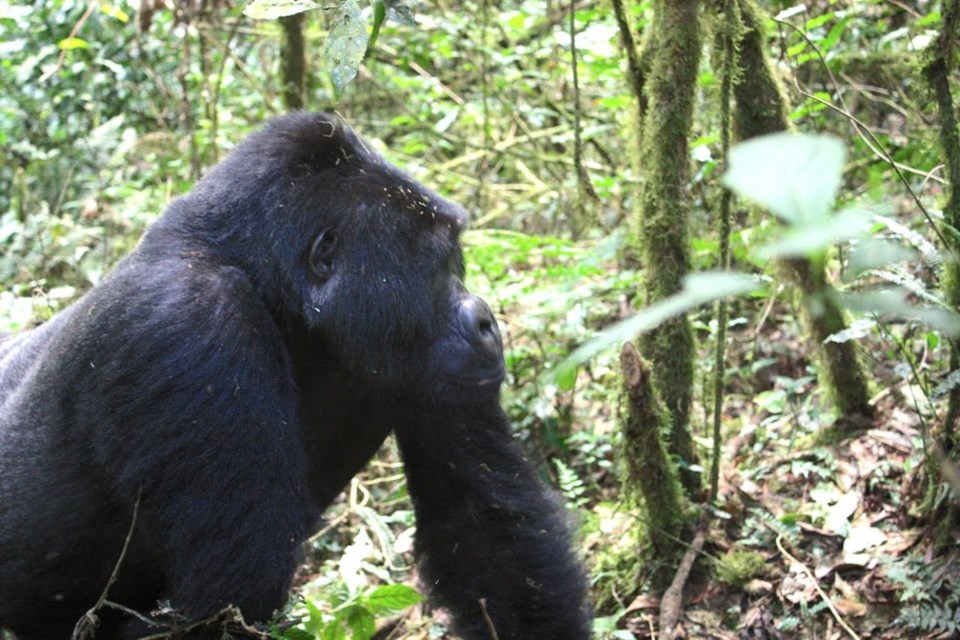
If the gorillas were like elderly friars, moving slowly and intentionally with a spiritual air, the chimps are like crazed children bouncing off the walls in a maniacal kindergarten. But they are just a delight to watch, and we hike back out of the forest beaming.
That afternoon, back at the lodge, we walk over to the tree nursery, where Volcanoes Safaris Partnership Trust, a non-profit associated with the lodge’s parent company, is working on a reforestation and conservation outreach program. Each member of our group plants an indigenous seedling, which will become part of a forest of 400,000 trees in a three-kilometre buffer zone designed to protect the chimps’ natural habitat.
After a much-needed refresh in my outdoor shower overlooking the gorge, I head to the pool for a moment of quiet before our communal dinner. I settle into a chair with a book, and Peace appears out of nowhere, offering cold drinks and snacks. I look up to see two elephants in the distance, walking along the green hills.
After dinner, we sip drinks under the light of a supermoon. We ask each other the same question that’s started our conversations since the first night of the trip: What’s your favourite out of all the wildlife we’ve seen? At this point it’s impossible to answer. The gorillas, of course. The elephants pulling reeds from the banks of the river, when we cut the engine of our boat and sat in silence to listen to them eat. The six baby warthogs that ran in tight formation after their mother. The huge procession of Ugandan kob waiting patiently in line at the watering hole. The lions. The chimpanzees.
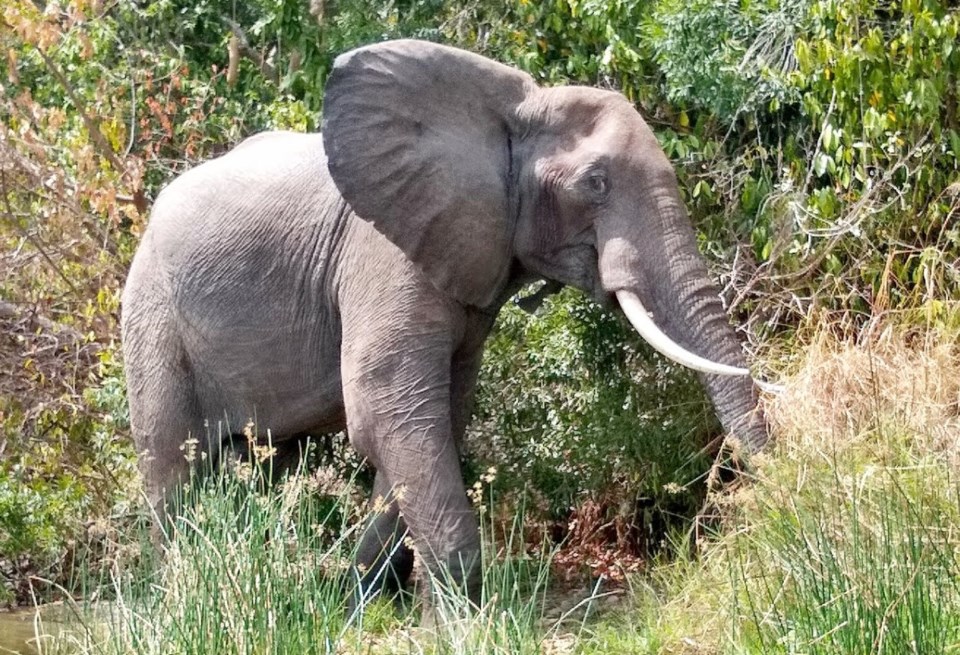
In the morning, Peace again appears from nowhere as I open my door, ready to help me with my bag. After a last breakfast featuring honey from a local beekeeping project that helps keep the elephants a safe distance from the lodge, we drive away for a final time, ready to climb into a small propeller plane for the first leg of our long journey home.
Christina Newberry travelled as a guest of the Uganda Tourism Board, which did not review or approve this article.
@ckjnewberry
